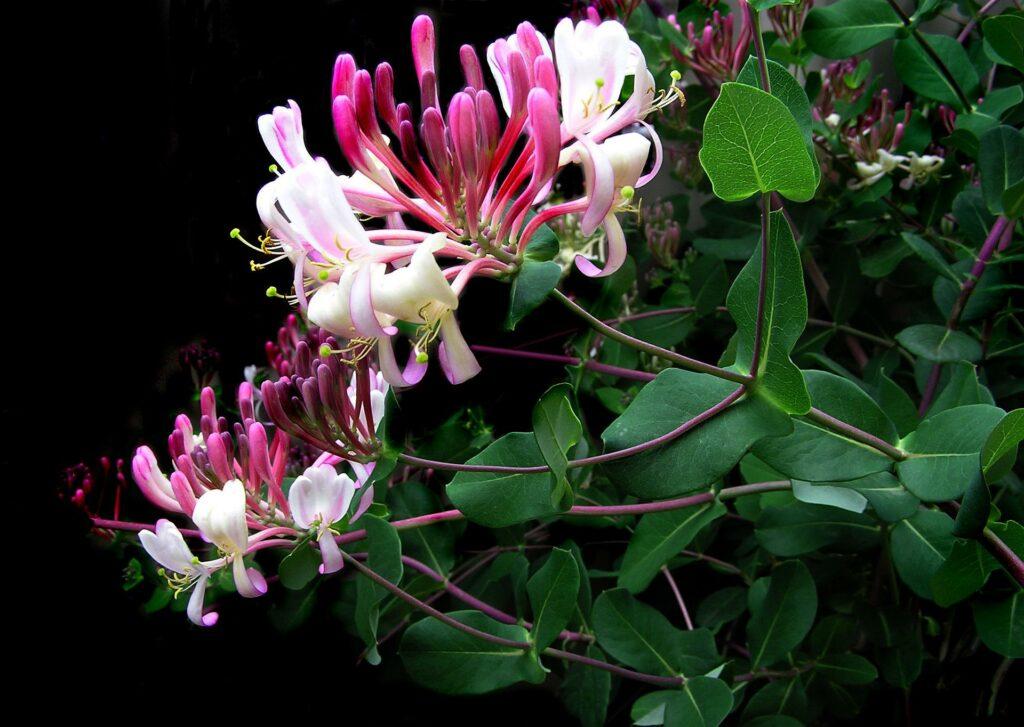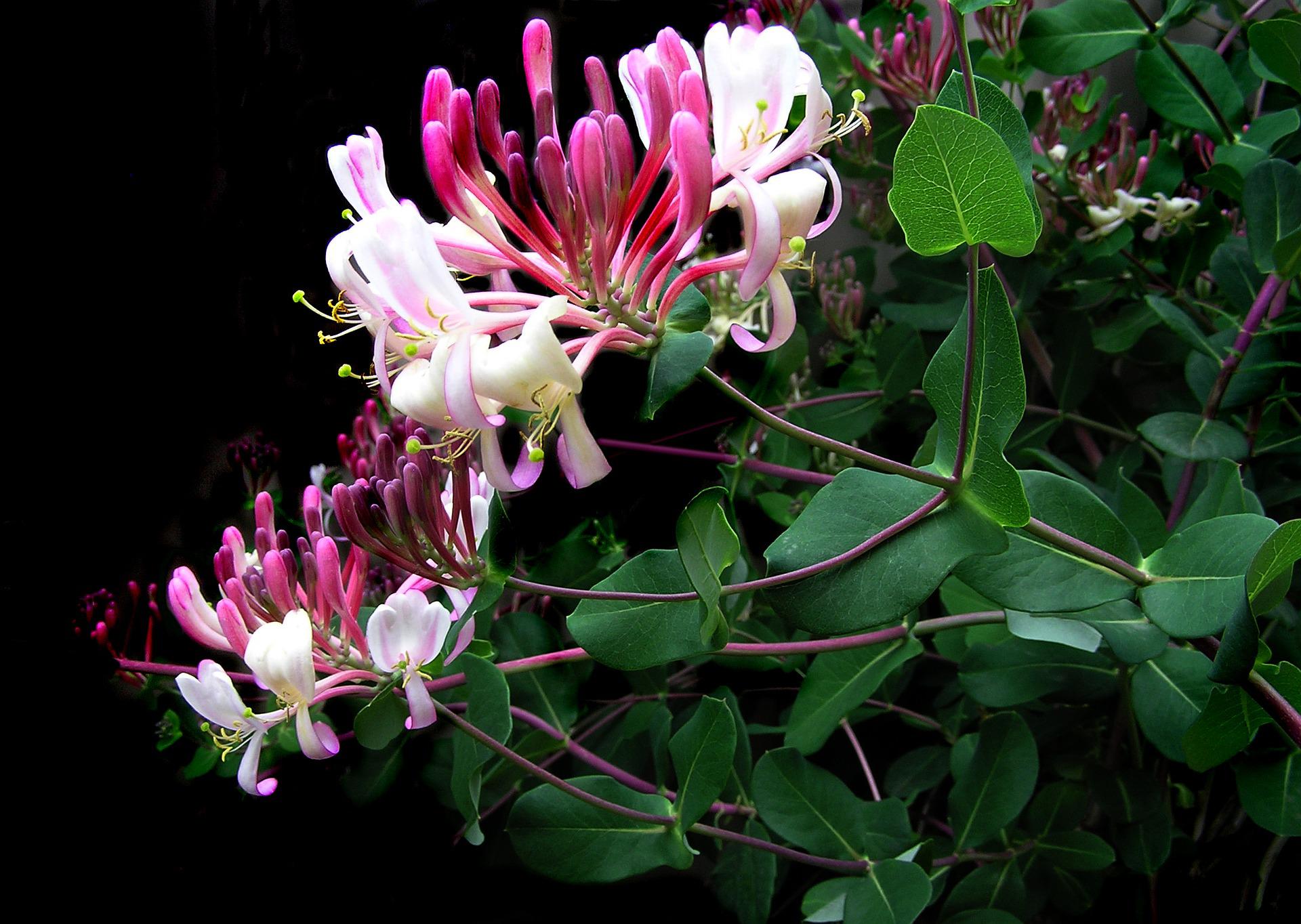It is likely that whatever your growing space, be it garden, paved area or balcony, you will have areas that are naturally shaded for some or most of the day.
In my garden the left had side gets all the sun, while the right-hand side is shaded by a fence that runs the length of the garden.
In this situation a good option for colour and coverage is to grow vines and creepers that will be happy growing with less light but that will still produce beautiful flowers or foliage.
Here I will cover the best climbing plants for shade and also look at their growing needs and support requirements.
2. Honeysuckle
3. Climbing Hydrangea
4. Ivy
Virginia Creeper
An absolutely beautiful and low maintenance vine, Virginia Creeper will grow in sunny conditions as well as full shade which makes it perfect for growing in any part of the garden.
It is deciduous however so the leaves will fall in winter and regrow in the spring.
This does mean that the leafy coverage will not be there through the winter months but because of this the changing colours of the leaves through the autumn will give the most spectacular display of reds, oranges and yellows.
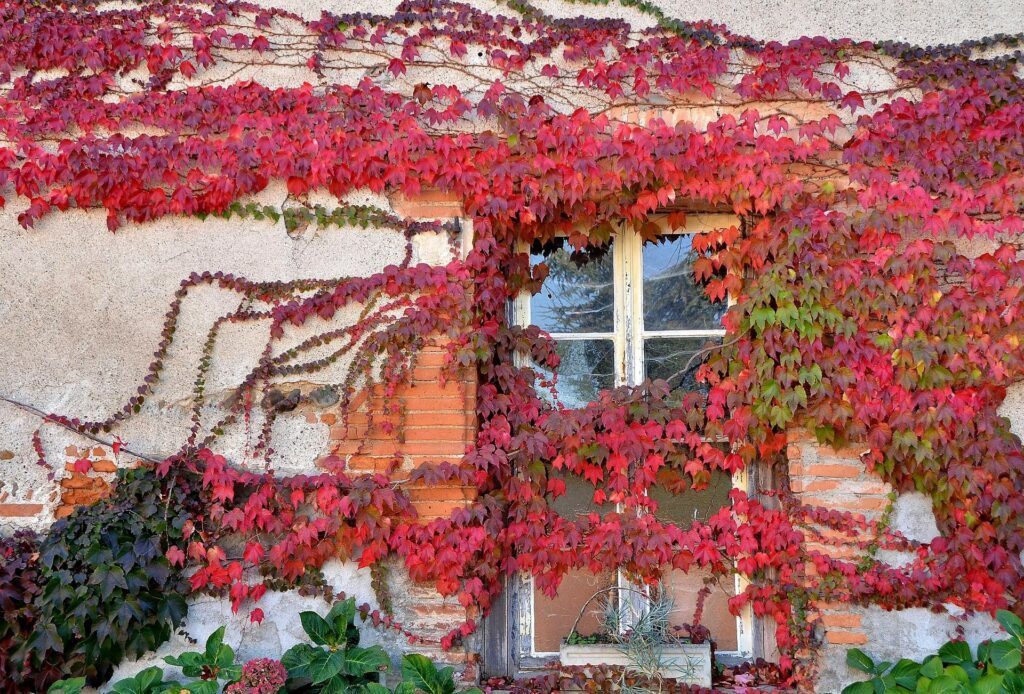
The flowers are very small and green, forming on clusters that then turn into dark berries which are toxic, so perhaps cut them off of you have children or pets.
It is recommended to plant a few young plants along the wall or fence you are trying to cover to ensure an abundant horizontal spread.
While the vine is getting established you can assist the attachment to the vertical face by supporting some of the larger branches, but once it gets going it will happily use it’s small stem roots and tendrils to set into any small recess and will not need further support.
Virginia Creeper can grow very large, up to 90 feet (27 metres) but if you do not want it to get this big then it can be pruned to keep it to a manageable size
Honeysuckle
Lots of people think that Honeysuckle needs sun, but it grows wild in the woods as ground cover and likes to have cool and shady roots.
Some sun will encourage more flowers, but many varieties are perfectly happy in full shade and will actually have denser foliage as a result.
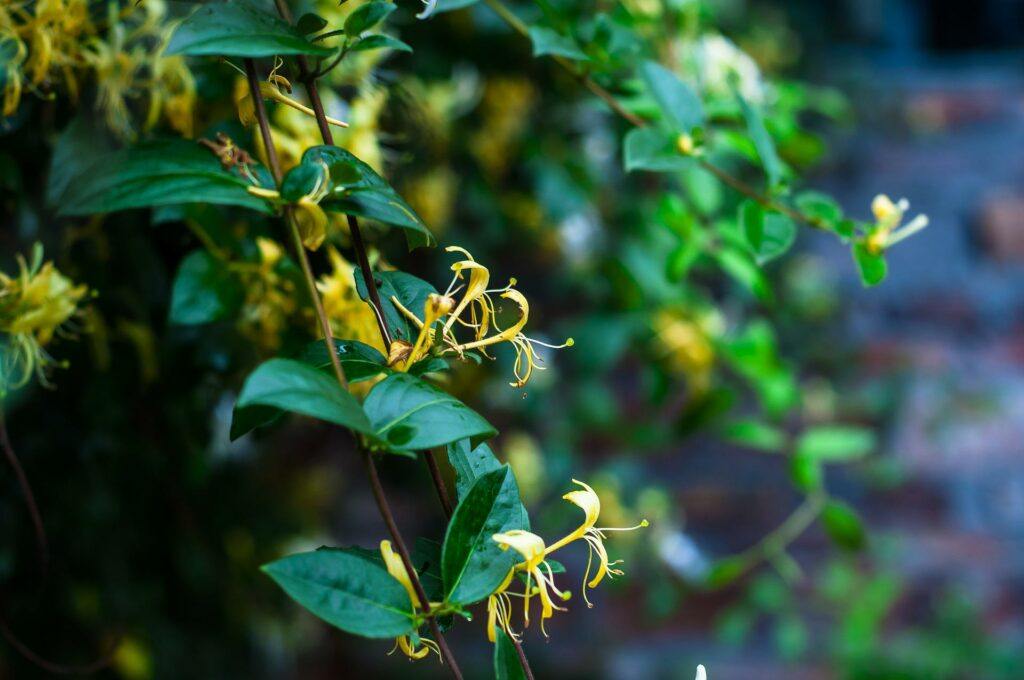
Honeysuckle grows fairly quickly, so is a good option to cover a wall or fence over a few years.
It is very attractive to bees and pollinators and emits a beautiful scent.
The stem turns woody over time to support itself but some of the newer long branches may need supporting up and along the surface until they can twist around something to hold in place.
There are both deciduous and evergreen varieties, with the evergreen types tending to have smaller flowers.
Both will produce red berries which are toxic to humans and pets.
Climbing Hydrangea
This is a fantastic climber that I have only recently discovered and as a bonus it is most happy in partial to full shade.
There are both deciduous and evergreen varieties, but the evergreen types do need a slightly warmer climate to perform well.
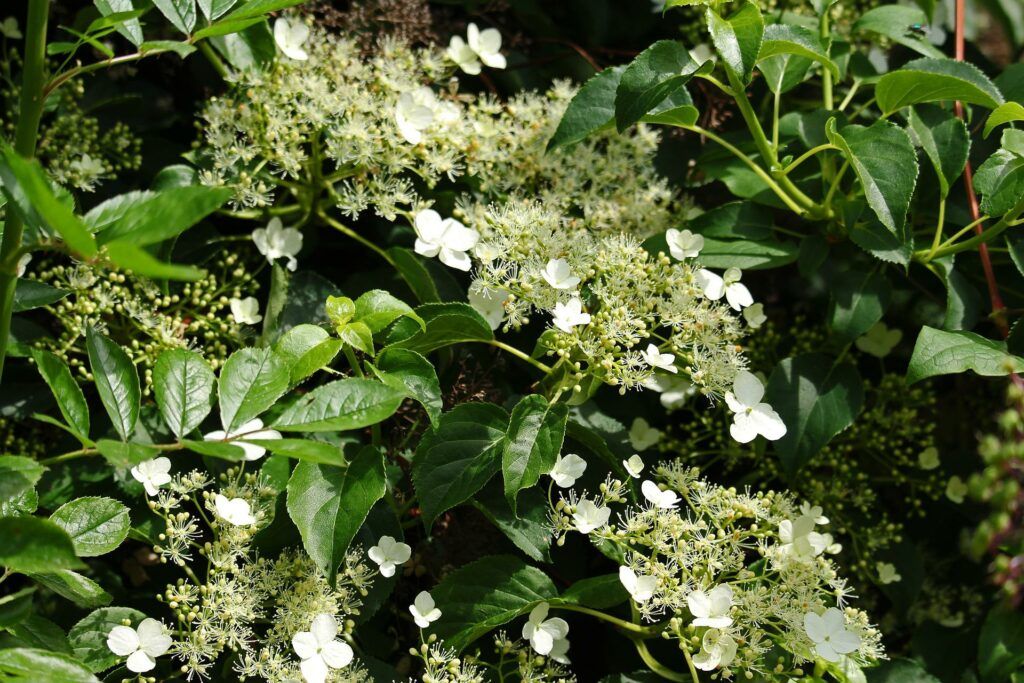
Like all Hydrangeas they love to be well watered and like well draining but fertile soil.
The leaves and flowers are large and fulsome so do need decent nutrition and hydration.
The flowers are usually white or cream with a blowsy lace structure, and have a lovely scent.
One thing to note is that Climbing Hydrangeas, like all Hydrangeas, are poisonous to dogs and humans.
Once sourced as a small plant (I ordered two online and they came as rooted stems with approximately 5 pairs of leaves each) they can be planted directly in the soil at the base of your wall or fence.
Add some compost if you have poor soil but make sure the drainage is good.
Water in well and provide support like a trellis to assist them in the beginning.

Mine have been in now for three months and have grown significantly.
They do take some time to establish but once they have laid down a decent root system they can grow quickly and become very large, covering a house wall.
Depending on the strength of the wall in question, this weight may need further support as the Hydrangea grows.
Climbing Hydrangea flowers on the previous year’s growth so in the initial stages keep pruning to an absolute minimum and only early in the season if you have to do it, so the plant has enough time to develop enough stems for flowering the following year.
Ivy
Ivy in it’s many forms is the absolute classic climbing plant for shady areas, although it also does fine in partial shade and sun.
Ivy is evergreen and so provides beautiful year round cover for both ground and vertical surfaces.
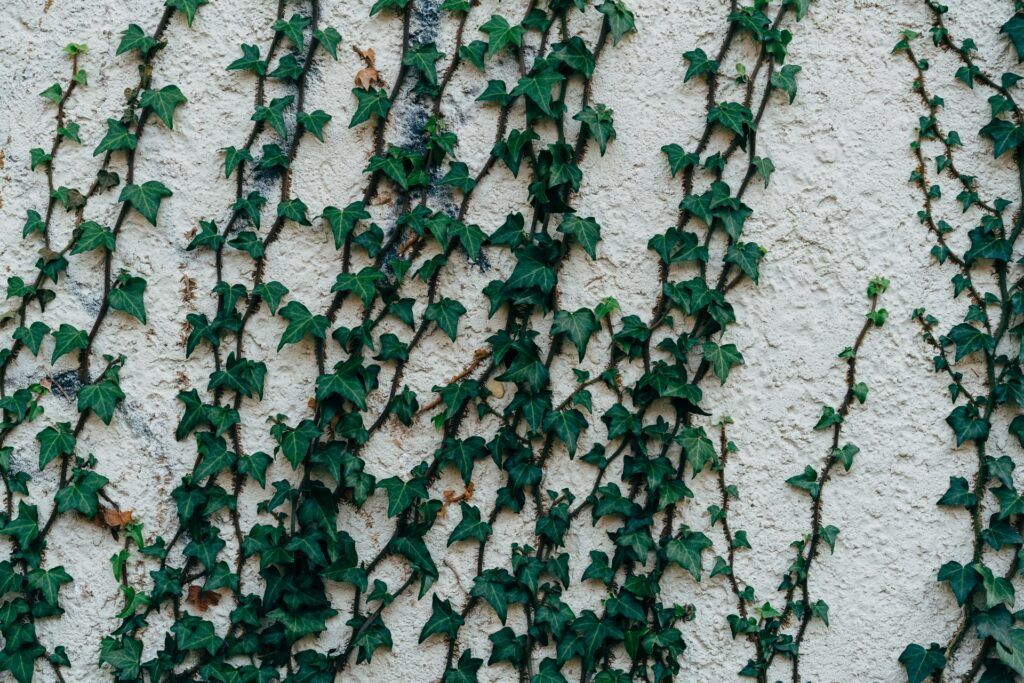
There are lots of varieties to chose from, some have dark green shiny leaves like English Ivy, others can be variegated, such as Algerian Ivy and this can help bring a splash of light and interest to dark corners.
Although some people believe it can strangle trees and damage structures, this is not the case and will only have adverse effects on trees and buildings or walls that were compromised to begin with.
Ivy is a vigorous climber however and this does need to be considered when choosing it for a space. It should be pruned regularly to keep it under control and looking attractive.
Ivy is self clinging and does not usually need any extra support.
Something to bear in mind is that Ivy is mildly poisonous and in some people can cause a slight skin reaction when coming into contact with it, so a recommendation is to wear gloves when trimming if this is the case.
Conclusion
I have focused here on plants that do best in full shade as this can be a difficult area to address, but there are many other climbing plants that do well in partial and dappled shade.
I will mention a few here just for completeness:
Clematis – Most Clematis like sun however there are a few varieties that do not mind partial shade. Clematis ‘Polish Spirit’ and Clematis Alpina are two such examples.
Climbing Roses – Rosa ‘Climbing Iceberg” and “Paul’s Himalayan Musk” among others will do well on a North or East facing wall.
Star Jasmine – A vine with beautiful white flowers and a wonderful scent, this climber does prefer sun but will be tolerant of some shade.
Climbers are interesting plants to grow and can offer fantastic coverage in a short time. They are low maintenance and great for beginner gardeners.
If you have a shady wall or even a structure that you wish to beautify, why not consider growing one or more climbers and enjoy verdant and natural cascades of foliage and flowers.
